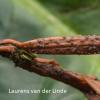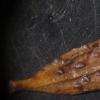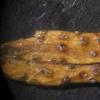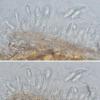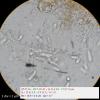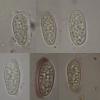
21-12-2025 09:32
Hello.A tiny ascomycete found embedded in wood in

21-12-2025 21:32
Pol DebaenstHello, Garden, Burgweg 19, Veurne, BelgiumOn 10/1

22-12-2025 23:38
Patrice TANCHAUDBonsoir, récolte sur un mur en pierre, apothéci

22-12-2025 00:47
Patrice TANCHAUDBonsoir, récolte à proximité du milieu dunaire

21-12-2025 21:40
Isabelle CharissouBonjour, j'aimerais connaitre les références de

20-12-2025 23:08
Patrice TANCHAUDBonsoir, récolte sur sol sablonneux dans l'arri�

20-12-2025 15:47
Mirek GrycHi.These grew on pine wood that was heavily covere



Thank you very much for page 226, the pdf and your information.
Because of the size of the conidia and the absence of any brown coloured ones Laurens's collection could also be Cryptocline taxicola.
Best wishes, Riet

in a last year's collection of C. taxicola (from autochtonous population) I noticed spore sheaths, easily stainable with aqueous congo red. Usually they were wide and excentric, but sometimes they were tight and only a little bit loosened near the poles (bottom left photo). This might explain those "appendages" in the previous thread. I haven't noticed any sheath in Diplodia sp. on Fraxinus - are they lacking in D. taxi too?
Best wishes,
Viktorie

Mr. Schumacher: "......thank you for sharing your information.This is NOT a Diplodia-like. Only in a very young state of development the immature conidia can be hyaline and do have coarsely guttules. But the arrangement of the guttules is not the same as in Cryptocline. A good work name is Cryptocline taxicola ......."

